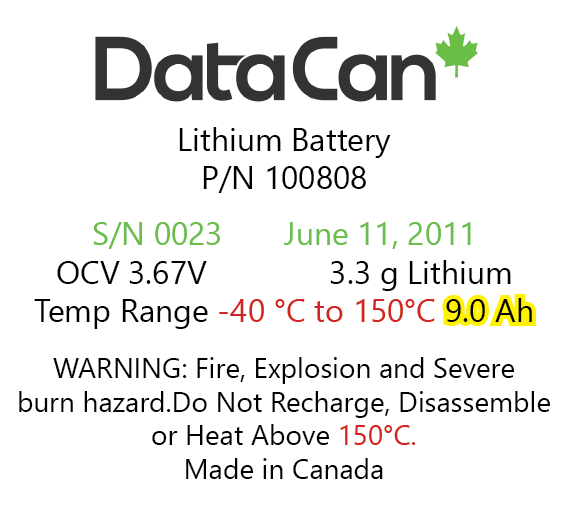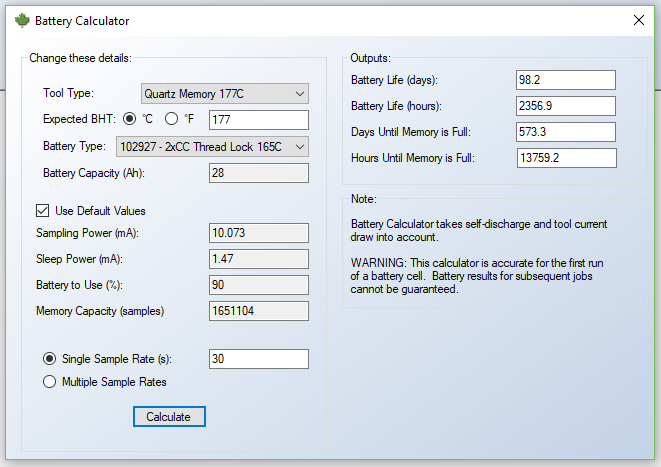
Lithium Metal Battery Pack Information
posted on 16 January 2019 by James Wright
Battery packs provide power to downhole devices, an understanding of battery technology is critical in maintaining a high level of success. DataCan’s high-temperature battery packs use Lithium Sulfuryl Chloride or Lithium Thionyl Chloride cells. There are numerous battery sizes, temperature ratings, and rate capacities. In most cases, the customer tool type and maximum downhole temperature will dictate the battery pack required. Refer to DataCan’s battery brochure page to match your tool with its correct battery pack.
Battery pack life is critical. Measuring the voltage of a lithium battery pack will not help you determine its remaining life. The voltage discharge curve of a Lithium cell is very flat. Hence, when you measure the voltage of a lithium battery pack, you are not confident in knowing how much life remains in the battery cells.

The voltage of a lithium battery pack will be "acceptable" until the very end of its life. At the end of its life, a lithium battery cell suddenly loses its available energy.
The battery tester is used to:
- Depassify the battery cell.
- Check to make sure the battery pack fuse has not blown
- Check to make sure the battery pack is wired correctly
- Check to make sure the battery pack is working correctly
The most common question DataCan receives is, “How long will the battery pack last downhole?” To correctly answer this question you need to know the following:
What battery pack are you using, or more specifically, how much energy do you have available? Different battery packs have different amounts of available energy. All of DataCan’s new battery packs have their available energy printed on the label (highlighted in yellow below).

For used battery packs, the customer must manually record how much energy has been used during previous jobs. Alternatively, DataCan has a “Smart Battery” pack design which saves its own energy usage and its remaining energy can be downloaded by the customer.
What type of tool? Different tools use different amounts of energy as they sleep and sample.
What sample rate? DataCan’s tools use more battery energy while they are recording samples. In the case of the downhole shut in tool, relatively no energy is being used unless the motor is on.
What is the expected downhole temperature? This is critical as battery packs have significant levels of self discharge at temperature.
Once the above criteria are known, users can input this information in DataCan’s “Battery Calculator”. The Battery Calculator program can be found in DataCan’s program and download software under the "Utilities" tab.

It is important for users to also understand the concept of battery pack passivation. Battery cells contain two main chemicals: the anode, and the cathode. To increase shelf life, a thin layer of corrosion builds up between the anode and cathode. This thin layer is called the “passivation” layer. The passivation layer prevents the anode and cathode from reacting prematurely.
However, in some cases (especially in higher temperature cells) the passivation layer grows too large and can prevent the battery from operating correctly. The passivation can restrict the chemical reaction between the anode and cathode to the point where the cells appears to be dead. The solution is to depassivate the cell (remove the passivation layer). To depassivate the cell you can:
- Put a large current draw on the battery. A large current draw will act to erode the passivation layer.
- Vibrate the cell. Physical shock will help to displace the passivation layer.
- Heating the cell will also help to melt the passivation layer (heat is a common catalyst to any reaction).